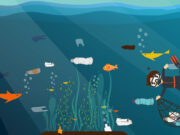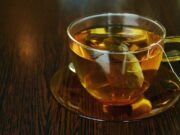When it's the excavating, recycling, beautiful Red Boring Sponge.
Red Boring Sponges on coral reef. Stephan Kerkhofs/Depositphotos
It's called the boring sponge as it drills into coral and sea shells....
In a rare piece of good news in the marine world, scientists have found two diving areas where manta rays are thriving.
Off the coast of Ecuador, American scientists have identified a distinct...
Gorgeous new book explains all - a must for all nudibranch lovers
Researchers solve some of pulsating soft coral (Xenid) mysteries, but their siestas still unanswered.
These slow moving fish are not at all intimidated by divers, and often come to greet you on your dive - where to see them and why some of them follow turtles
Most fish for human consumption contain microplastics, according to new study.
Scientists from New Zealand and Australia detected microplastics in 75% of commercial fish species. Both bottom-dwellers and pelagic fish were...
World’s largest container carrier MSC re-routes to keep away from endangered blue whales off the coast of Sri Lanka
MSC Mediterranean Shipping Company has taken a major step to help protect blue whales and...
1. Are they dangerous?
With tentacles three metres long and covered with stinging cells, it's better not to get too close to the Lion's Mane jellyfish. They have a very severe sting that can...
Dugongs have been documented in China for hundreds of years, but now scientists have concluded that they are functionally extinct there.
Giant sea fans are common and conspicuous in tropical seas, and a favourite with underwater photographers who often pose their buddy behind one.
Diver behind giant sea fan. Photo credit: Garry Frazer.






























